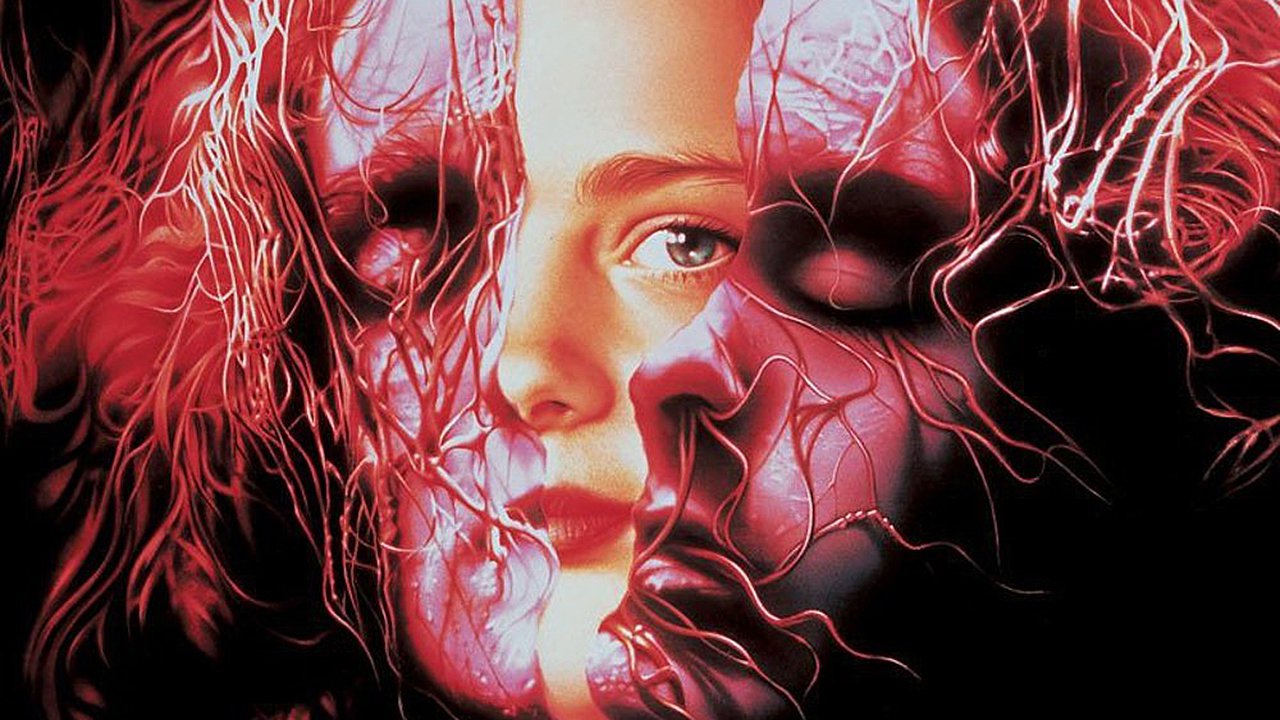
Horror reigned during the 1980’s, but during the 1990’s things grew a bit awkward. CGI was fully emerging, and many genre filmmakers leapt at the opportunity to utilize cutting-edge technology.
Unfortunately we still had a long way to go as far as computer effects were concerned, and a great number of horror efforts from this era are marred by abysmal digital graphics. Then Scream arrived in 1996, and Wes Craven revolutionized scare flicks for a third time (Last House in ’73, Nightmare in ’84, Scream in ’96). Hollywood again went slasher-crazy, but now with added gloss and a distinctly “Teen Beat” vibe.
In the 80’s we saw horror become fully commoditized, but by the late 90’s it had practically become homogenized. Still, several quality horror pictures did emerge throughout this tumultuous decade, and below are ten that definitely deserve your attention.
1. Graveyard Shift (1990)
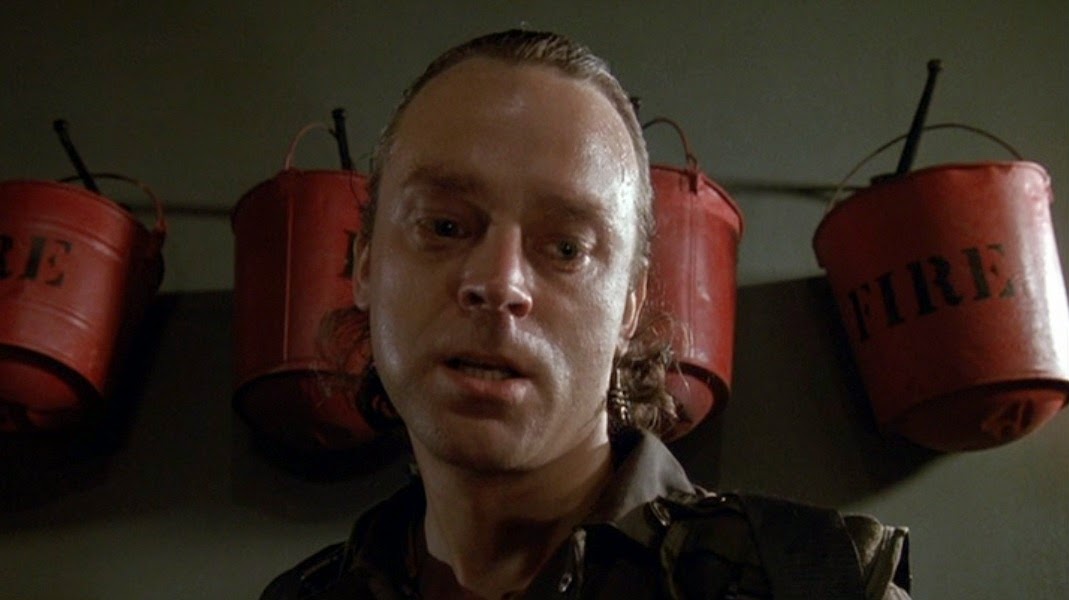
In the never-ending quest for box office returns, studios have been known to greedily pounce on any available Stephen King property. Nearly every book he’s written has been optioned for the screen, some even prior to publication. On numerous occasions, filmmakers have turned to the author’s short stories (some of which can barely withstand twenty pages, let alone an entire feature film) for source material.
Graveyard Shift finds its origins in the 1978 collection Night Shift, and deals with the reopening of an abandoned textile mill in rural Maine. Bachman Mill, which sits next to an ancient cemetery, has a bit of a rodent problem. The employees (led by their vindictive boss) are forced into the system of tunnels that runs beneath the ramshackle structure, ostensibly for cleaning duty; instead they encounter a massive, hideous beast that commands an army of vicious rats.
Don’t be mistaken: Graveyard Shift is not, technically, a good movie. It’s clumsily structured, visually flat (the film is far too brightly lit), and undeniably silly. But it’s never boring, not for an instant, and offers a memorable rogues gallery of characters that you won’t mind spending ninety minutes around.
Most notably, you’ve got Brad Dourif as a demented Vietnam-vet exterminator (he delivers a monologue about his war experiences that’ll have you glued to the screen), and Stephen Macht as the ill-tempered manager, sporting the most ridiculous Maine accent you’ve ever heard. It’s impossible to overstate how hilarious Macht is in this movie; no one on earth talks like that. The location is marvelous, and (aside from the aforementioned lighting issues) fairly well-used, properly utilized.
It’s a cheesy, late-night monster movie, nastier than usual and with decent atmosphere, copious unintentional laughs, impressive prosthetic effects. Commonly regarded as one of the worst King adaptations (quite a dubious honor), Graveyard Shift is no masterpiece but it’s incredibly fun. A pizza-and-beer movie if there ever was one.
2. Grim Prairie Tales (1990)
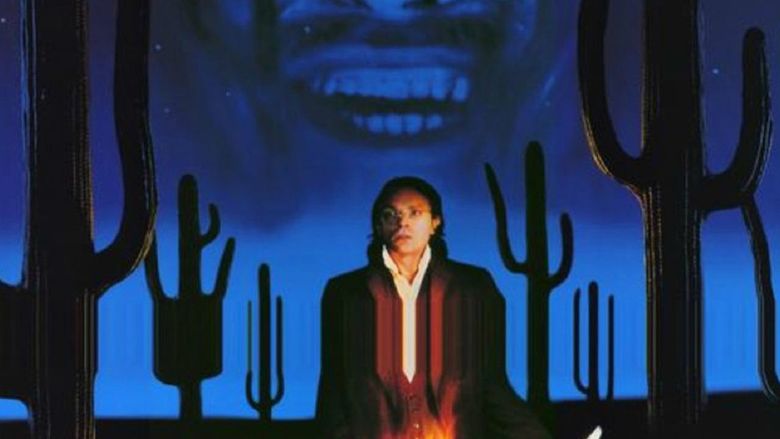
Almost entirely forgotten, Grim Prairie Tales is a unique horror/western omnibus from Wayne Coe (his only directorial effort). Set in frontier times, it centers on prudish traveller Farley Deeds (Brad Dourif) who encounters a bounty hunter named Morrison (James Earl Jones).
Seated around a flickering campfire, the two men settle in for a long, cold night, telling each other creepy stories to pass the time. Anthology films frequently suffer from lackluster wraparounds, but not this one: Dourif and Jones are in top form, their dialogue shockingly well-written.
Several negative reviews of the film complained that the individual segments are too slight, but yarns like these are meant to be efficient and simple; we’re presented with a captivating parade of indian curses, burial grounds, lynch mobs, and haunted gunslingers. This is the stuff of pure American folklore given a modern-day approach, and the bare-bones simplicity of the stories is actually quite refreshing.
It’s a very good film that could have been a great one if not for a few flaws, namely generic music and flat cinematography, but these drawbacks don’t keep Grim Prairie Tales from being one of the decade’s true lost gems.
Writer/director Coe still works today as a professional storyboard artist, and at one time designed posters for Universal (Back to the Future and Brazil, amongst others, are his). The last segment of this film features a jaw-dropping animation sequence that is an undeniable highpoint.
Grim Prairie Tales remains unavailable on DVD with no future release pending, truly a crying shame. As of this writing, it’s available streaming on YouTube.
3. The Reflecting Skin (1990)
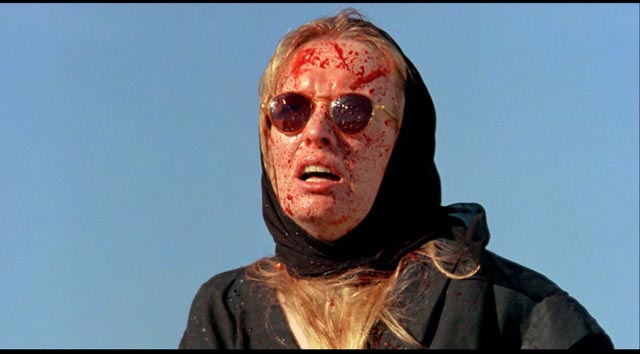
Phillip Ridley, a british director, said that The Reflecting Skin represents his idea of America: “a mythical never-world where guys look like Marlon Brando and Elvis Presley, everything is set in a wheat field and it all looks very gothic”. Set in 1950’s Iowa, the events in Reflecting Skin are seen through the eyes of a small boy.
Like many eight year-olds, Seth Dove is hyperactive, curious, and impressionable. The world Seth inhabits is a cruel one, his parents completely indifferent and preoccupied with their own suffering. Living amidst endless wheat meadows and under the rule of a horribly abusive mother, Seth harbors a suspicion that the quiet young widow who lives down the road is a vampire.
Left with nothing to depend on but his own imagination, Seth’s fixation on the neighbor woman grows more troubling; when his older brother, Cameron (Viggo Mortensen), returns from war and develops a romantic relationship with her, Seth’s concerns turn to fear.
We’ve never had another on-screen child quite like Seth, incapable of understanding adult human interactions but surrounded entirely by pain and confusion. Isolation, religious zealotry, a father accused of murdering children, a mother who forces him to drink water by the gallon as punishment: Seth doesn’t have it easy, and his child-brain works overtime trying to make sense of this adult world he’s set to inherit.
Aside from being an absorbing character study (and a spot-on period piece), Ridley’s film emerges as a visual triumph. The cinematography from Dick Pope is amongst the strongest of its decade, in any genre; every single frame could be hung on your living room wall.
A stone-cold work of genius, The Reflecting Skin was recently given the deluxe re-release treatment from Soda Pictures. After being unavailable for years, audiences finally have the chance to catch this neglected gem in all its widescreen glory. Seek this one out.
4. Brain Dead (1990)
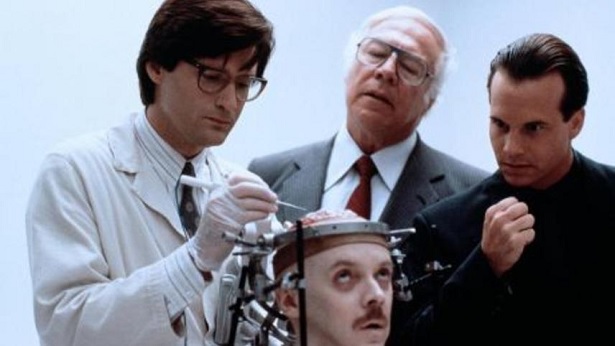
Brain Dead is a marvelous puzzle of a horror film: fiercely intelligent, witty, and clever as hell. It revolves around a top neurosurgeon, Rex Halsey, who is contacted by a megalomaniacal outfit called the Eunice Corporation. It seems a former Eunice employee (and genius mathematician) has gone insane, and holds within his mind some particularly sensitive material.
The higher-ups over at Eunice hire Halsey to perform brain surgery on their disturbed ex-staff member in the hopes that it will loosen the mans tongue. Once Halsey begins the process, however, he himself begins experiencing unsettling hallucinations.
Mild at first, they increase in intensity until the picture is seamlessly hopping back and forth between fantasy and reality, the audience growing more incapable of distinguishing between the two. Dr. Halsey descends into a fragmented insanity, the result of exploring a madman’s brain; or does he? Is he a part of something bigger? Every time Halsey enters a room or turns a corner, we can’t wait to see what frightening new world awaits him.
This is thinking man’s horror, providing striking, horrific imagery and intellectual food for thought. Solid cast, too: Bill Pullman (as Halsey), Bill Paxton, Bud Cort, George Kennedy. Brain Dead was written (twenty-five years before it was filmed) by Charles Beaumont, author of several essential Twilight Zone episodes; he died in 1967.
The script was unearthed in the late eighties by Roger Corman’s wife, Julie, and passed along to 28-year-old director Adam Simon. His debut offering is cerebral horror done right, its twisted story a precursor to psychological mind-games like Jacob’s Ladder and Starry Eyes.
5. The Borrower (1991)
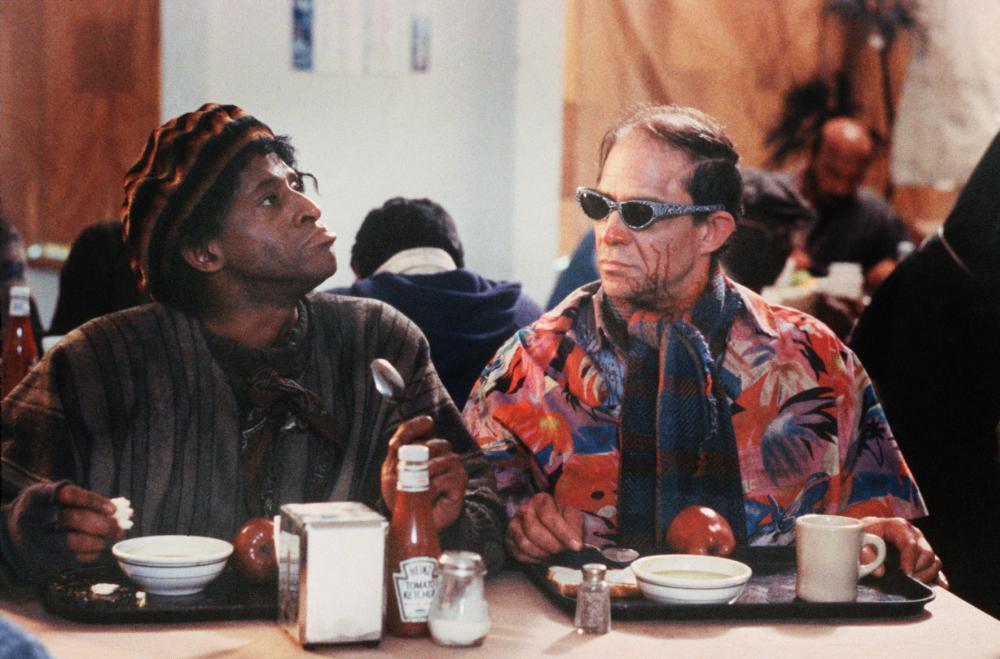
John McNaughton’s first film, Henry: Portrait of a Serial Killer, was a massive critical success. Still rightly hailed as a groundbreaking classic, it seemed to announce the arrival of a bold new talent.
His follow-up, The Borrower, wasn’t nearly as well received, and kickstarted McNaughton’s slow descent into cinematic obscurity. Not unlike Henry, it follows a ruthless killer that preys on unsuspecting people; this time, it happens to be an alien from outer space. Apparently quite a nuisance on its home planet, the otherworldly being has been genetically transformed to look like a human and banished to live on Earth.
For whatever reason, its head continually explodes and it has to “borrow” craniums from hapless Earth residents: the titular creature spends the film’s duration ripping off heads to replace its own.
This allows for a glimpse at various cross-sections of society, our villain beginning its journey roaming the streets as a vagrant, only to wind up curiously observing the contents of a rich doctor’s kitchen, having just inherited his noggin. There’s a weak subplot involving a police investigation (with a woefully miscast Rae Dawn Chong), but the fish-out-of-water extraterrestrial material, which takes up the bulk of the picture, is hugely enjoyable.
Watching this intergalactic misfit try and acclimate to our mode of existence makes for entertaining viewing, and as the head is constantly changing, so is the actor: Tom Towles (Otis in Henry) probably fares the best, but Antonio Vargas (Huggy Bear from TV’s Starsky and Hutch) also makes quite an impression.
The attempts at humor come off nicely, the makeup effects (by Kevin Yagher and Everett Burrell) are effective, and the propulsive synth score is perfection. Minor narrative missteps aside, The Borrower is a darkly funny creature feature with a mean streak that deserves a second look.